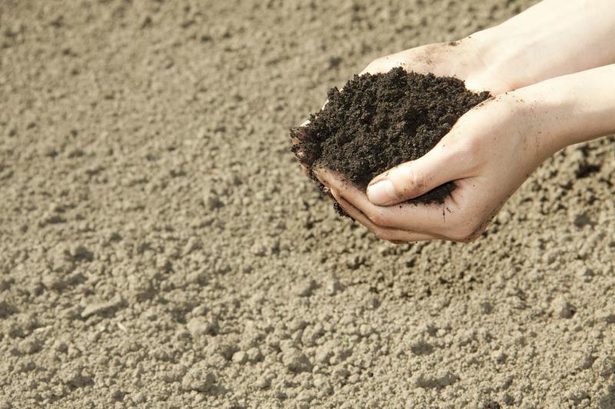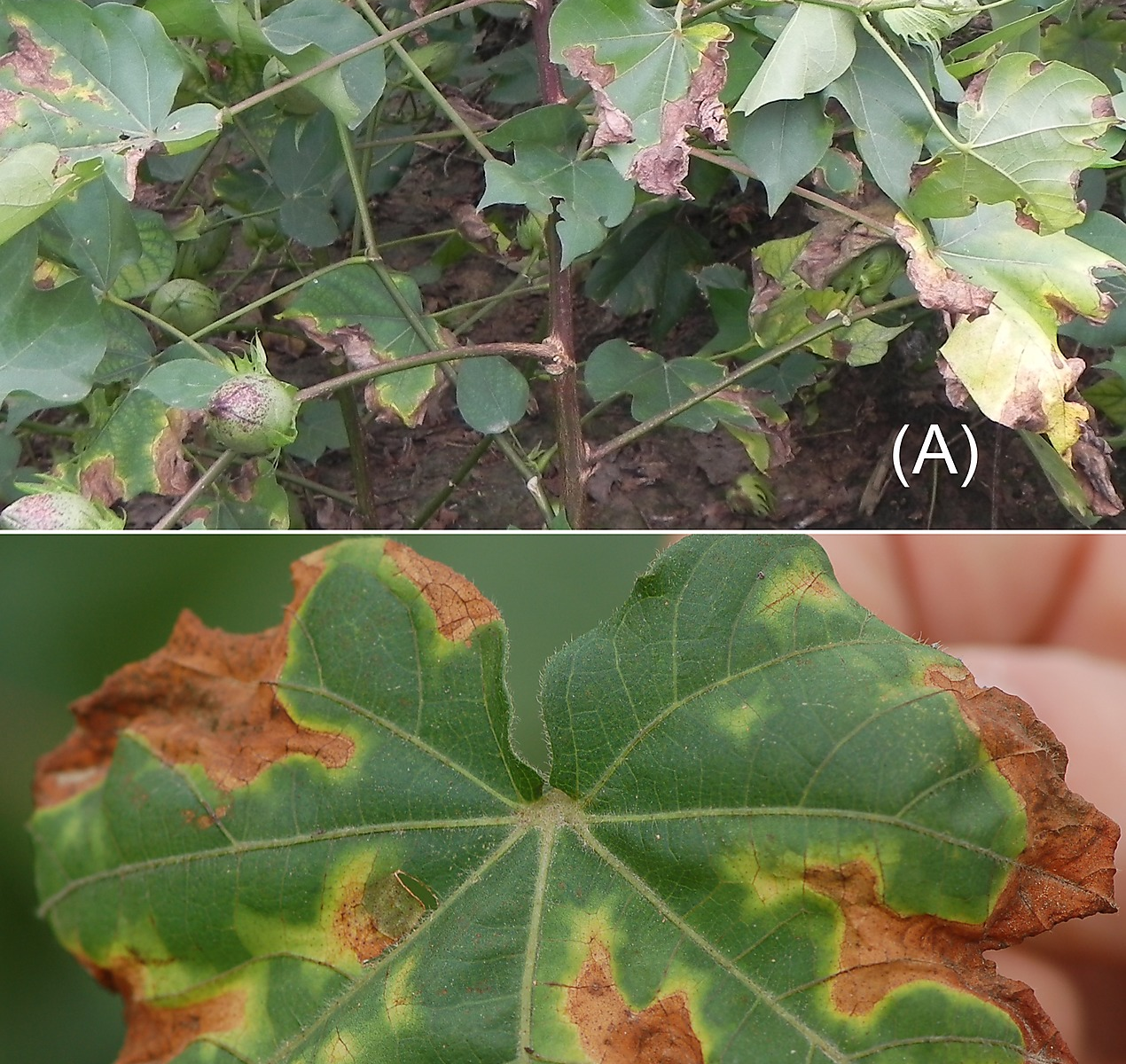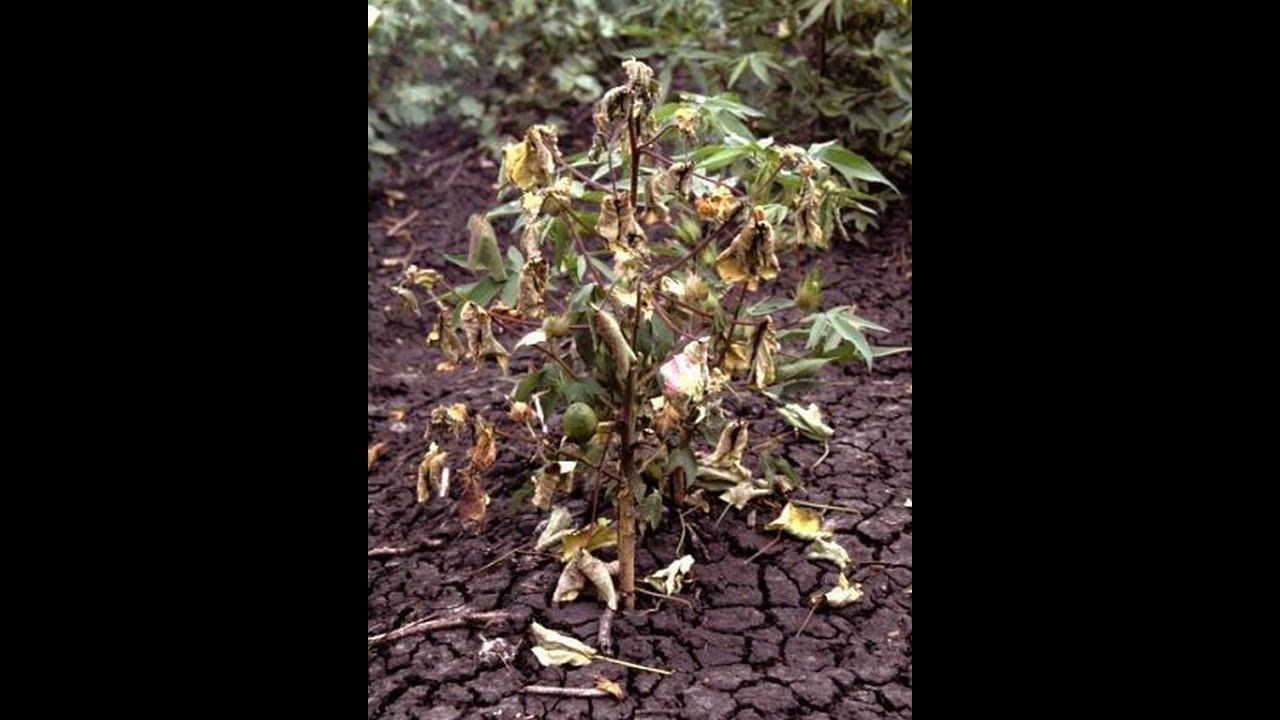- After starting the cultivation process in cotton with deep ploughing, use a harrow 3-4 times so that the soil is friable and water holding capacity increases. By doing this, the harmful insects present in the soil, their eggs, pupa and the spores of fungi are also destroyed.
- Soil treatment must be done so 4 kg of zinc solubilizing bacteria, 2 kg of Growmax (seaweed, amino acids, humic acid, and mycorrhiza), 2 kg of Trichoderma viride and 100 gm of NPK consortia bacteria in 4 tons FYM per acre mix well at the rate and spread it in the field.
- By doing this, along with improving the structure of the land, complete development of plants and complete nutritional growth, it also protects against harmful soil-borne fungal diseases.
Verticillium wilt of cotton
- Plants infected at early stages are severely stunted.
- The first symptoms can be seen as bronzing of veins.
- It is followed by interveinal chlorosis and yellowing of leaves.
- Finally, the leaves begin to dry, giving a scorched appearance.
- At this stage, the characteristic diagnostic feature is the drying of the leaf margins and areas between veins, which gives a “Tigerstripe” or “Tiger claw” appearance.
Share
Control of Fusarium wilt in cotton crop
- Level up after deep plowing (6-7 inches).
- Use disease-free seed.
- Follow 6-year crop rotations.
- Grow resistant varieties.
- Seed treatment with Carboxin 37.%+ Thiram 37.5% @ 2 gm /kg or Trichoderma viride @ 5 gm/kg.
- Apply Mycorrhiza @ 4 kg/acre at 15 days after sowing.
- Spraying Thiaphanate methyl 75% WP @ 300 gm/acre at before flowering.
- Spraying Propiconazole 25% EC @ 125 ml/acre at pod formation stage.
Like and share with other farmers by clicking on button below
Share


